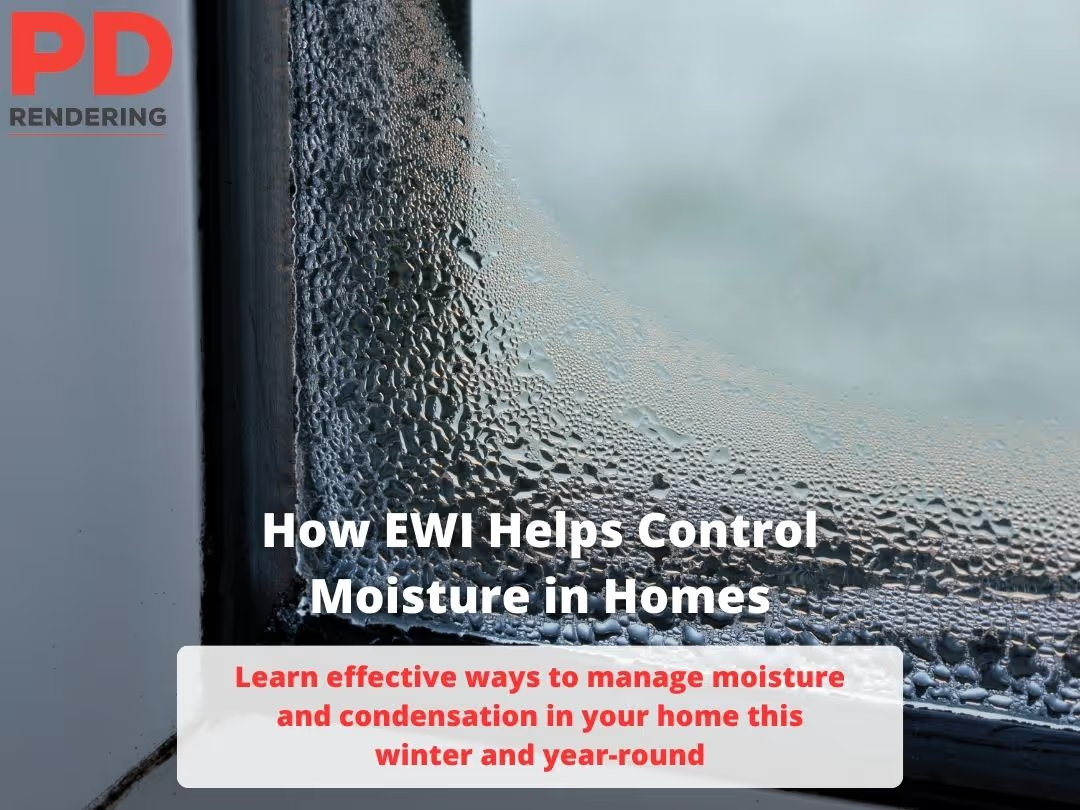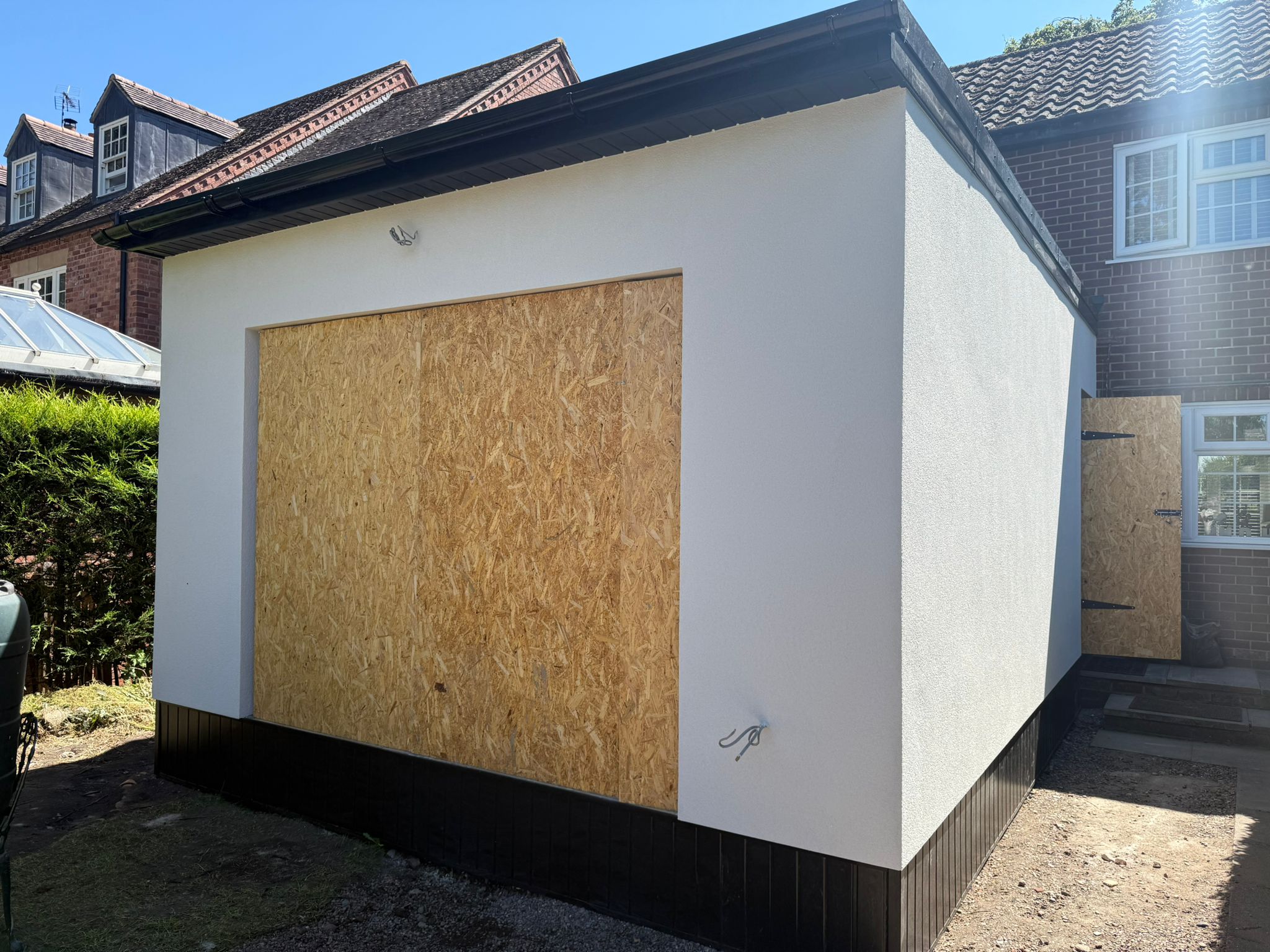
As colder weather approaches in the UK, many homeowners face increasing issues with moisture and condensation, leading to potential mould growth and structural dampness. These issues, common in both old buildings and modern structures need to be managed effectively to protect the integrity of buildings and ensure occupants' health.
External Wall Insulation (EWI) is critical in controlling indoor condensation, essential for maintaining its insulation effectiveness and prolonging its durability. In our blog, 'How EWI Helps Control Moisture in Homes,' we will guide you through proven strategies to shield your property and improve indoor air quality.

Understanding both terms is essential for maintaining your home effectively and preventing potential damage. Here’s what you need to know:
Moisture: Moisture refers to water or water vapour present in the air, materials, or the structure of a building. It can lead to mould growth, structural decay, and reduced indoor air quality when it exceeds normal levels.
Condensation: Condensation happens when water vapour in the air turns into liquid water. This process typically happens when warm, moist air contacts a colder surface, cooling the air below its dew point and causing water vapour to condense into droplets.
Condensation can lead to several issues within a home, including encouraging mould growth, damaging building materials, and reducing the overall thermal efficiency of the building.

What to Watch For:
Causes of Condensation:

Managing indoor moisture and condensation is key to maintaining a healthy living environment. Here are effective strategies to prevent excessive moisture and condensation in your home:
Ventilation: Proper ventilation is vital to get rid of moist air from your home and minimise condensation:
Reducing Moisture Production: Lowering the amount of moisture produced in your home can significantly reduce condensation:
Humidity Control: Regulating the humidity levels inside your home can prevent the formation of condensation:
Temperature Maintenance: Maintaining a steady indoor temperature helps prevent cold surfaces where condensation can form:
Implementing these measures can greatly improve your home’s resistance to moisture problems and enhance the overall indoor air quality and comfort.
EWI notably increases a building's energy efficiency by enveloping it in a layer that minimises heat loss in winter and heat gain in summer. This not only reduces energy costs but also makes living spaces more comfortable.
Benefits of EWI in Moisture Management:
Integrating EWI improves your home's thermal performance while playing a crucial role in managing moisture. This makes it a valuable investment for the longevity, health, and comfort of your property.

Meticulous Installation:
Correct installation of EWI is extremely crucial. It should be carefully designed and applied to ensure there are no gaps between the boards, hence preventing thermal bridges. Attention must be paid to covering not just the flat areas of the walls but also the corners, edges, and around structural points such as meter boxes, doors, and windows to ensure a continuous insulative layer.
Expert Assessment:
Hiring a professional contractor who is experienced in EWI installation is essential. They can assess the property’s compatibility with EWI, advising on the right design, materials, and installation techniques to maximise the benefits of the insulation as .
Quality of Materials:
The use of high-quality materials is also very important. Poor quality materials may not provide sufficient protection against moisture.
Ventilation Strategies:
Sufficient ventilation is critical to control indoor moisture levels. Proper ventilation will prevent the accumulation of damp air inside the home, consequently reducing potential condensation issues.
Ongoing Maintenance:
Regular maintenance of the EWI system is essential to ensure its longevity and effectiveness. Routine inspections should include checking the roof for any damage, ensuring gutters and downspouts are free from blockages, and making any necessary repairs to prevent moisture penetration.

Implementing EWI is a proactive step towards preventing excessive moisture and condensation in your home. When installed correctly, EWI is a comprehensive solution that enhances not only your home's energy efficiency but also its moisture management. It's essential to address any pre-existing issues such as faulty guttering or rising damp before installation to ensure the insulation performs effectively. Along with EWI, maintaining adequate ventilation and regular maintenance are key to ensuring your home remains dry, warm, and energy-efficient. By investing in quality EWI, you protect your home against moisture-related damages and create a healthier living environment for you and your family for years to come.

Contact us today to discover how we can help make your home warmer and more efficient.

